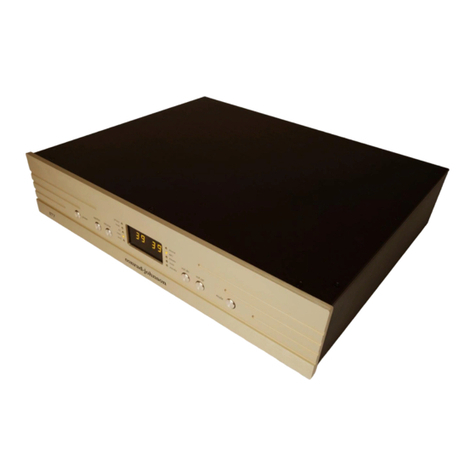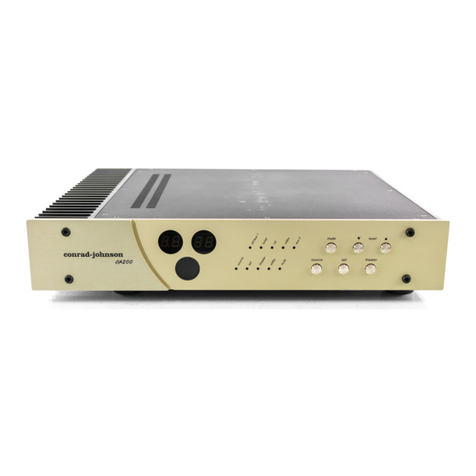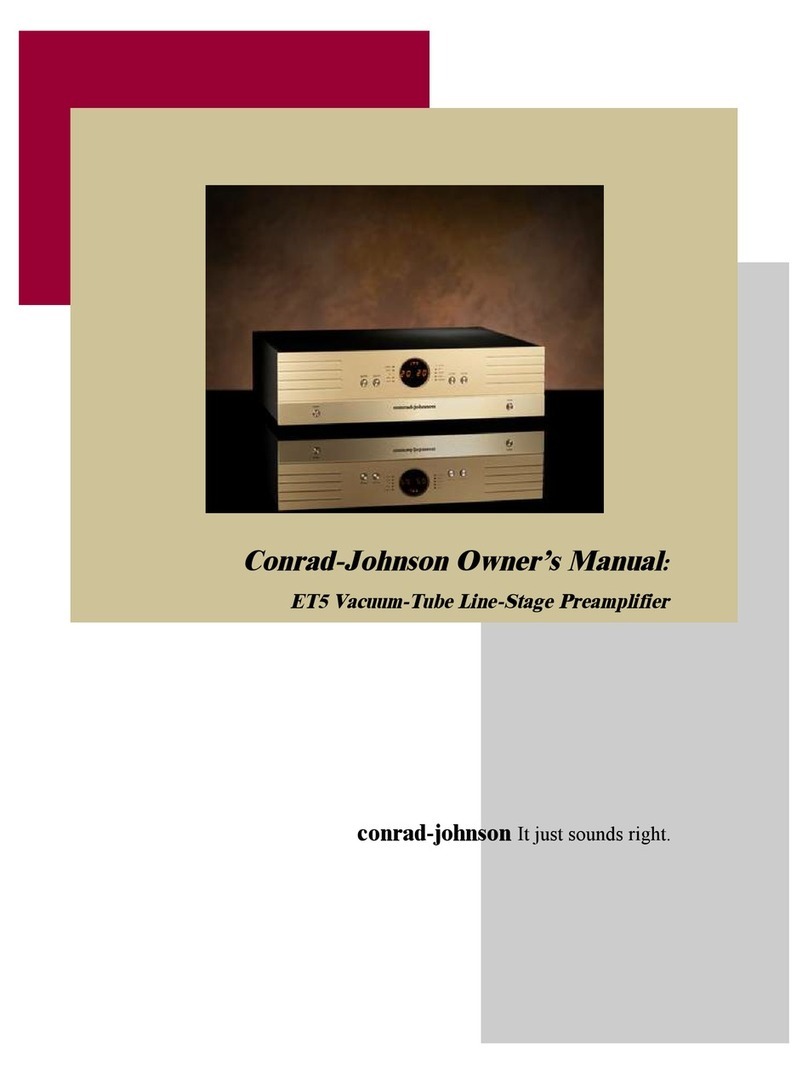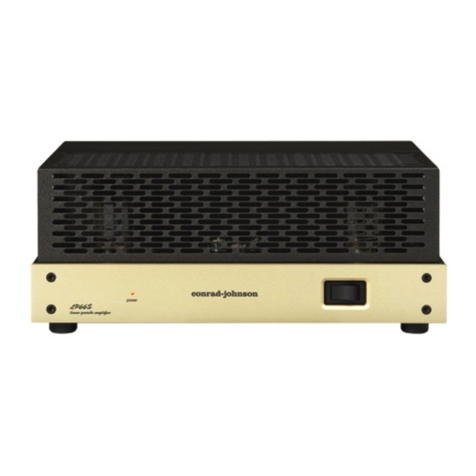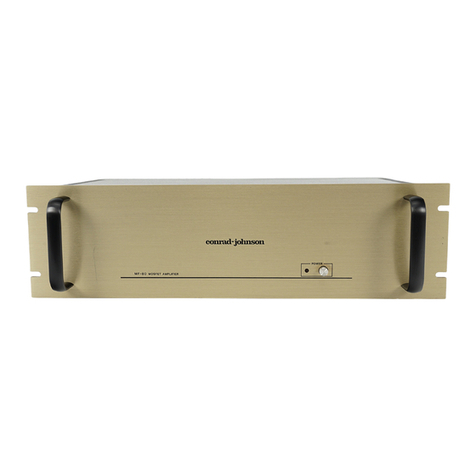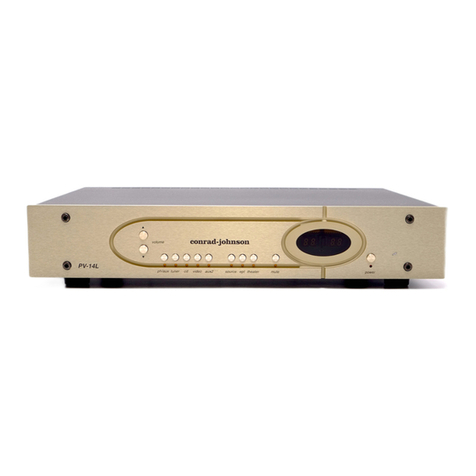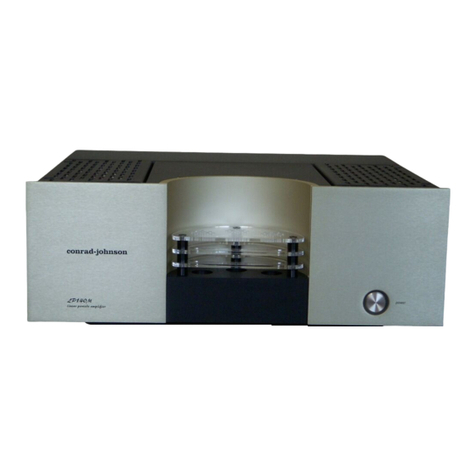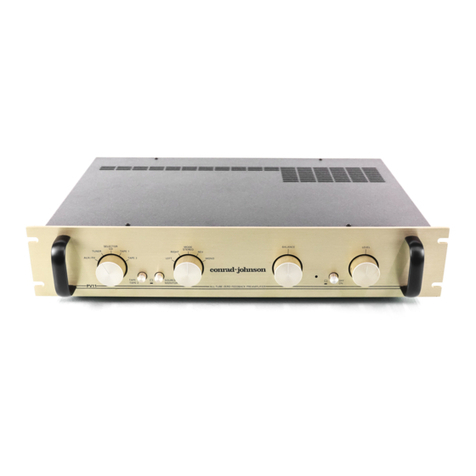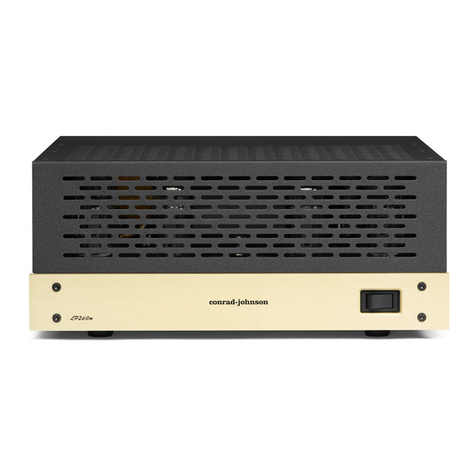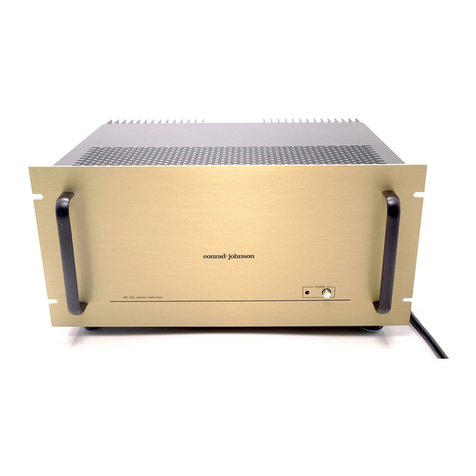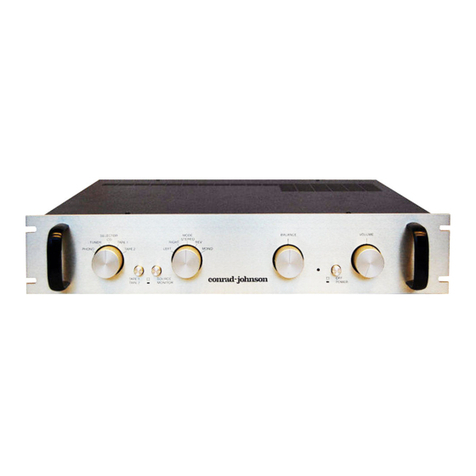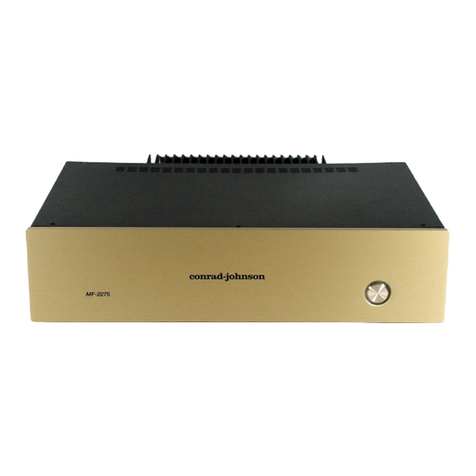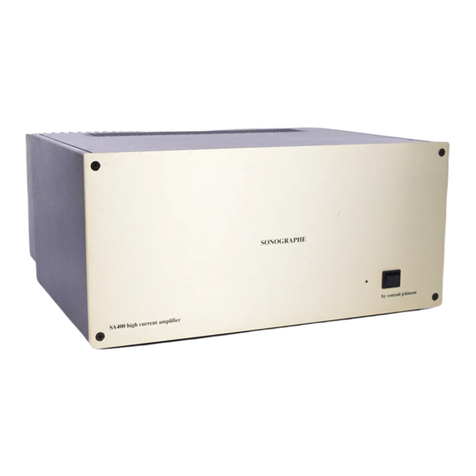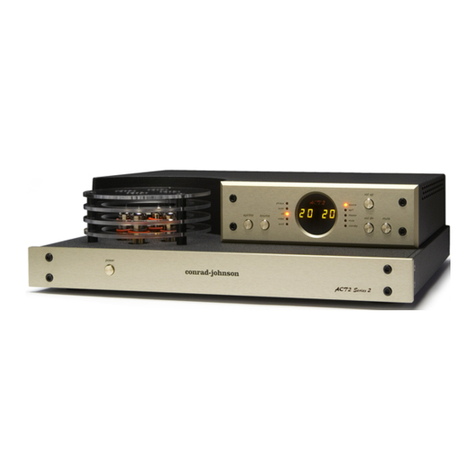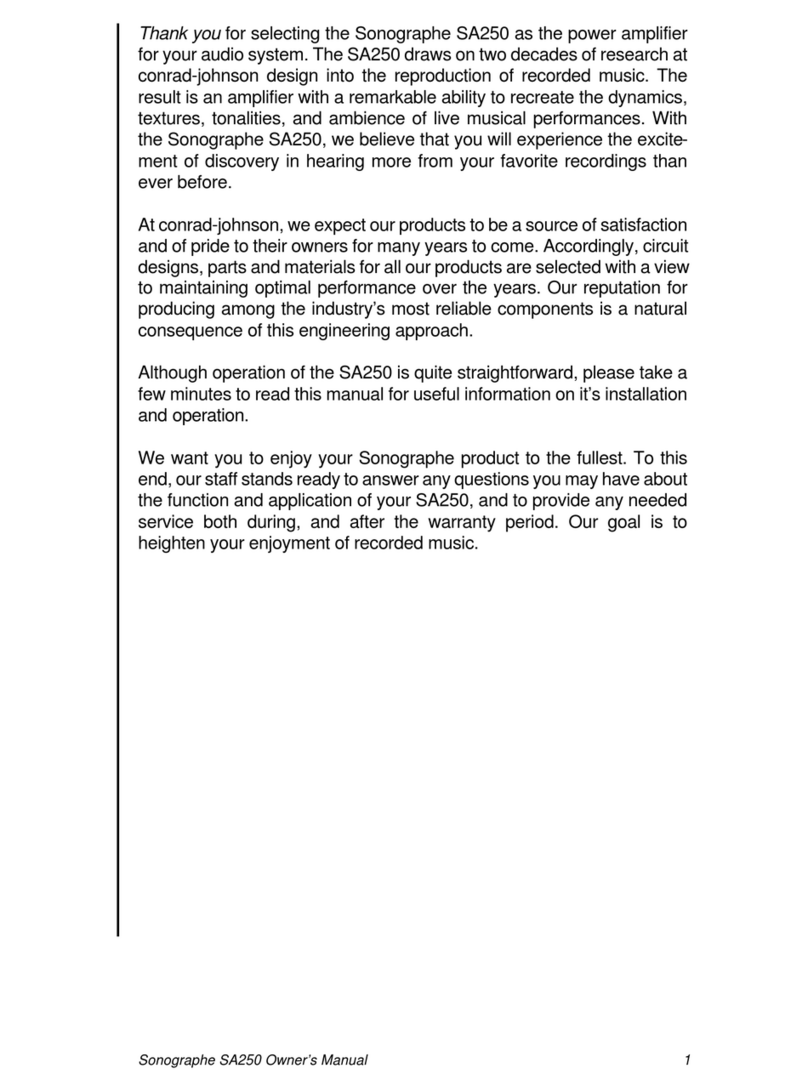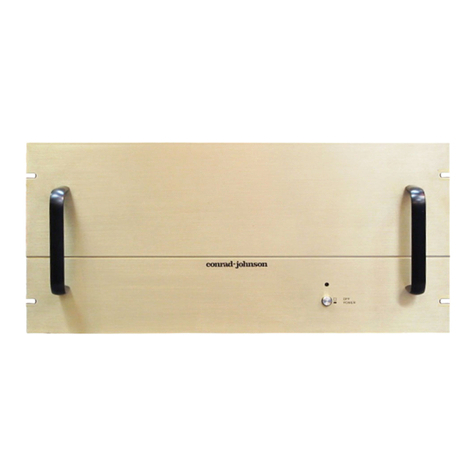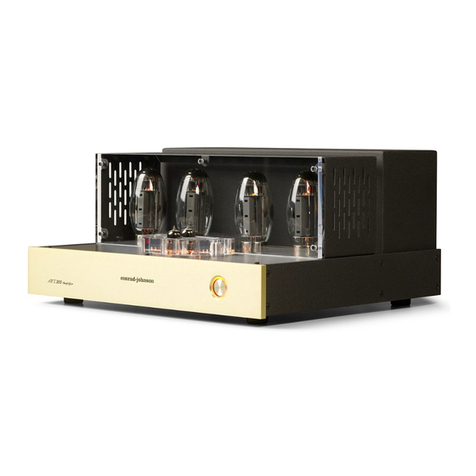nstallation
As is the case with any power amplifier, the CA150 dissipates a
significant amount of heat. To maintain proper ventilation, mount
the unit on a flat, hard surface, taking care that the ventilation holes
in the bottom are unobstructed. Maintain at least three inches of
clearance above the unit, and at least three inches on the sides.
The cabinet or shelf should be open at both front and back. For
more restricted installations, cooling fans are recommended.
The CA150 is protected by a thermal sensor that will shut the
amplifier circuit down in the event of overheating. If this happens,
the front panel display will read “-- --“ and the mute led will turn on.
When the amp has cooled sufficiently it will automatically power on
in the default mode (level set at 30, CD input selected).
All CA150s sold in the United States are configured for operation
on a 60Hz ac power line producing between 108 and 126 volts.
Export versions of the CA150 will have the correct operating
voltage and frequency clearly marked on the back panel of the unit,
near the ac power cord. In all cases, the actual line voltage should
be within + 5/- 10% of the nominal rated voltage.
Electromagnetic Interference (EMI)
Considerable care has been taken in the design of the CA150 to
minimize its susceptibility to radio frequency interference and other
forms of EMI. Choice of materials, physical layout, grounding
practice, and power supply design have all been specified with a
view to reducing the impact of electromagnetic fields on the
performance of this unit. Our primary goal, however, is the
accurate reproduction of recorded music in a normal home
environment. We have elected not to compromise this objective by
the application of heavy-handed RFI filters, or by using grounding
practices that reduce RFI at the expense of degraded audio
performance. We find that our approach works well, resulting in
only rare instances of EMI problems which could be treated locally
as needed, rather than compromising the performance of our
product in the 99.9% of installations where EMI is not a problem.
Care in installation can often avoid EMI induced problems.
Interconnect cables should be kept as short as possible (3 meters
or less), and shielded cable should be used (cable which has two
